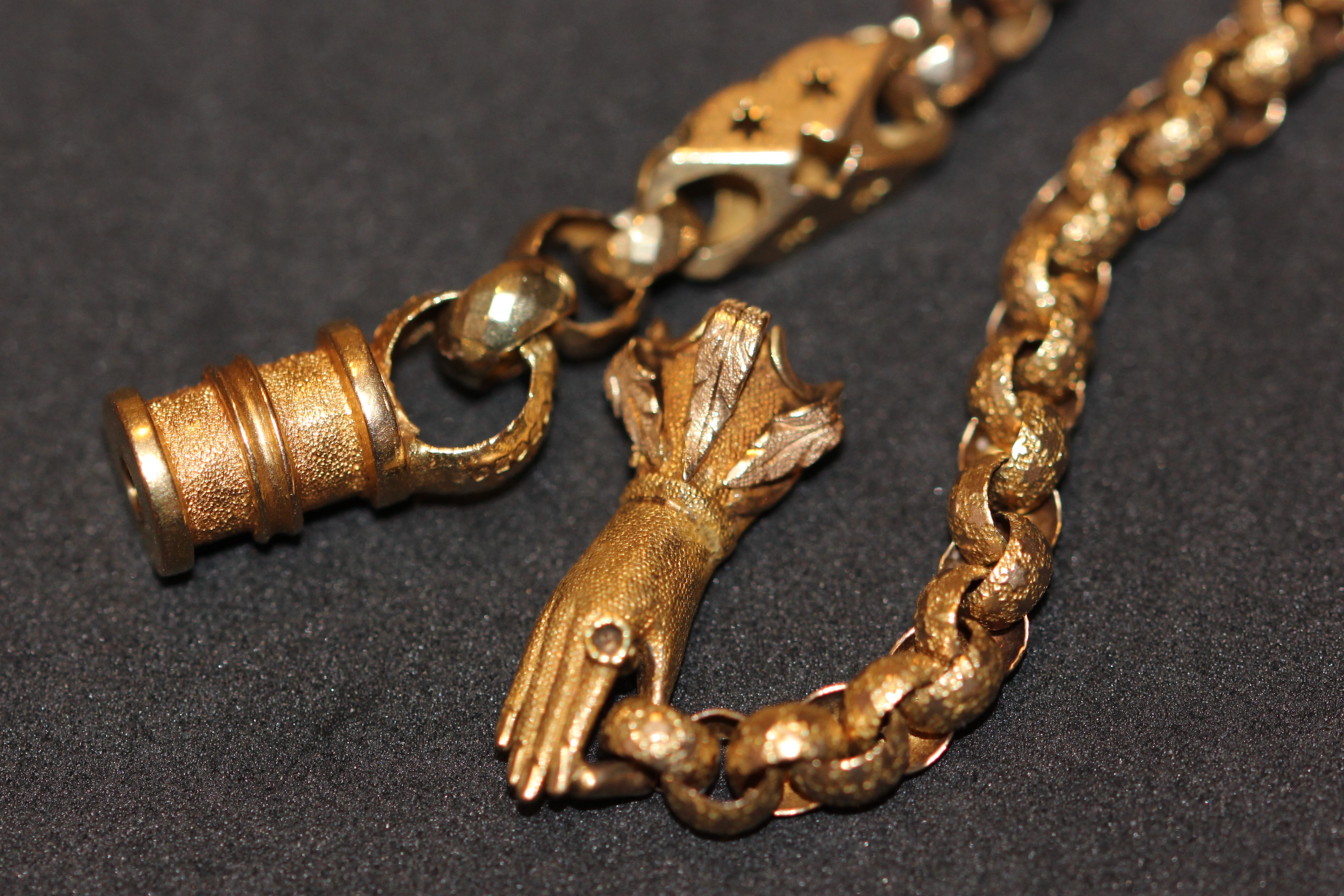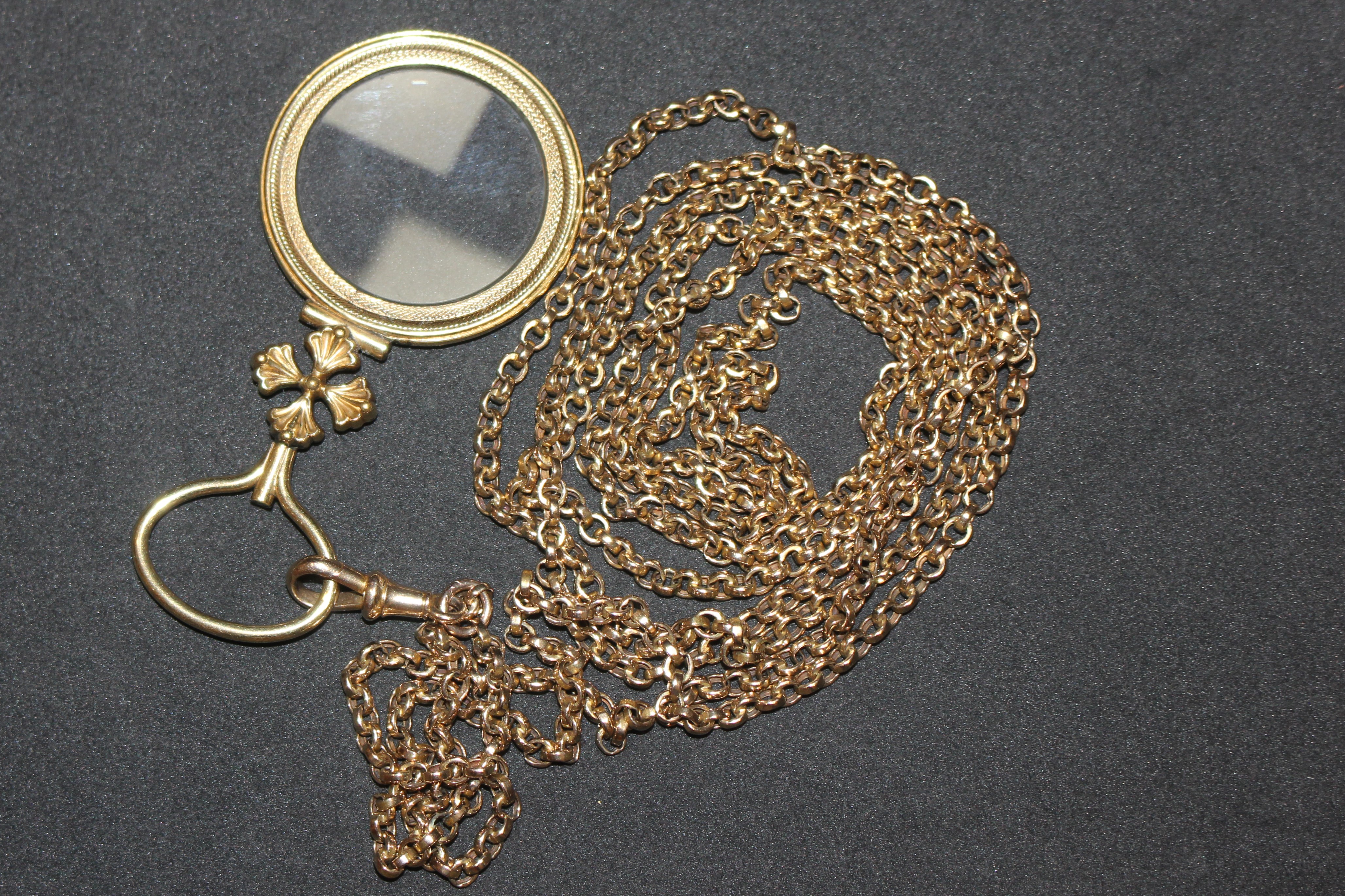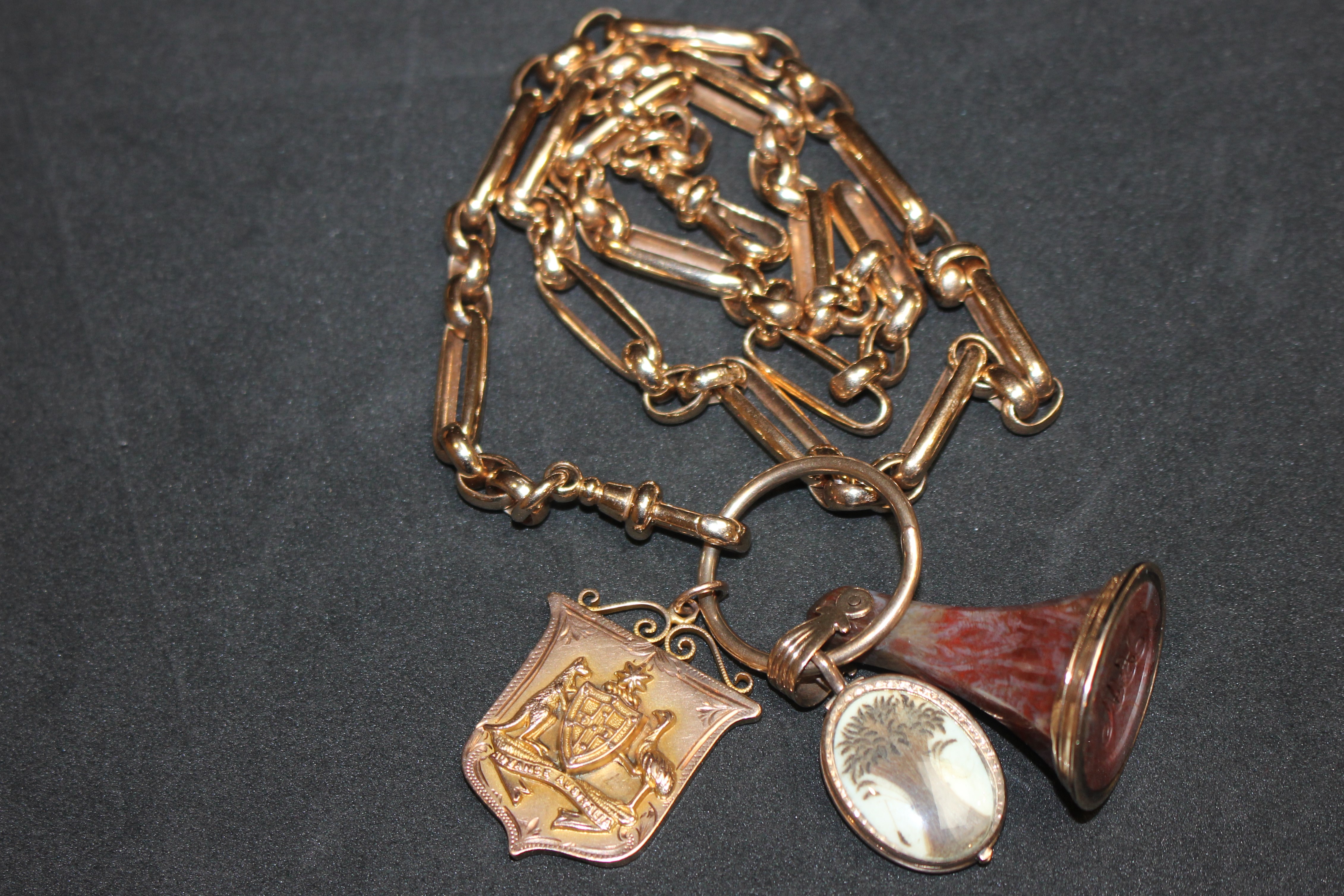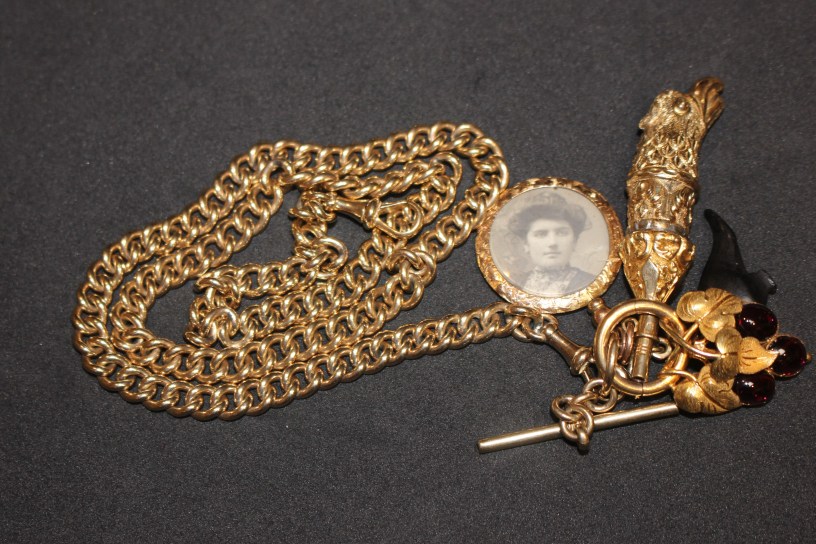The beginning of the 17th century saw a stronger focus on gem set and opaque enamelled jewellery which pushed the plain gold chain out of the spotlight. New overseas sources of precious gems became available. Naturalistic themes were adopted, along with lots of bows and knots. The Cheapside Hoard, uncovered in London in 1912, has some lovely examples of 17th century enamelled chains.
France and Spain had been leaders in jewellery design but France lost influence as, in 1789, the French Revolution leaders banned jewellery and disbanded the goldsmith and associated guilds. Clothing and jewellery was supposed to be plain and simple. Gradually, thin gold chains returned and between 1795 to 1815, necklaces with cameo, micromosiac and pietra dura plaques, connected by multiple festoons of fine gold chains, were popular. I have attached some links here to some lovely examples.
https://collections.vam.ac.uk/item/O74215/necklace-unknown/
https://collections.vam.ac.uk/item/O157746/necklace-unknown/
https://collections.vam.ac.uk/item/O110895/necklace-unknown/
Chains returned strongly in the Georgian era, particularly those from the Regency period onwards. Georgian chains are very recognisable. One of the reasons why they are easy to identify is that they are very light although they look quite heavy. During this period, gold was scarce, particularly after the Napoleonic Wars, so jewellers attempted to produce pieces that used as little gold as possible whilst also looking impressive. They are also hand made. Chains worn on their own were usually belcher links made up of textured chunky rings which were stamped out of thin gold sheets decorated with tiny geometric patterns on a matt background. They have ornate clasps, often barrel shaped or taking the form of a hand.

The belcher link is one of the few chains supposedly named after a person. James ‘Jem’ Belcher. It is claimed that belcher chains were named for the bare-knuckle boxer James “Jem” Belcher who held the title of ‘Champion of All England’ from 1800 to 1805. It is a link or trace chain but the links are wider than they are thicker.
Longer chains were worn in the 19th century, used for chatelaines, to hold lorgnettes, vinaigrettes, watches and crosses. They usually have a dog clip. The links for these types of chains, called guard chains and muff chains, varied a lot, from simple links, to belcher, curb, anchor and so on.

For men, the watch chain became an important accessory. Shorter and thicker than the female watch chain, the watch chain was used to carry fobs, watch keys, compasses, etc as well as a watch. The watch was carried in a small pocket in a man’s waistcoat and the chain, which became longer, was attached to a buttonhole with a T-bar. The chain became to be described as a vest chain, pocket to pocket chain, and then an Albert (named after the style worn by Prince Albert). Again, a variety of different chain links were used for these chains, with curb and fetter links being popular.



Loads of useful information, thank you
LikeLike
Awosome degine of chain. Thank you for sharing. https://erijewelry.com/
LikeLike